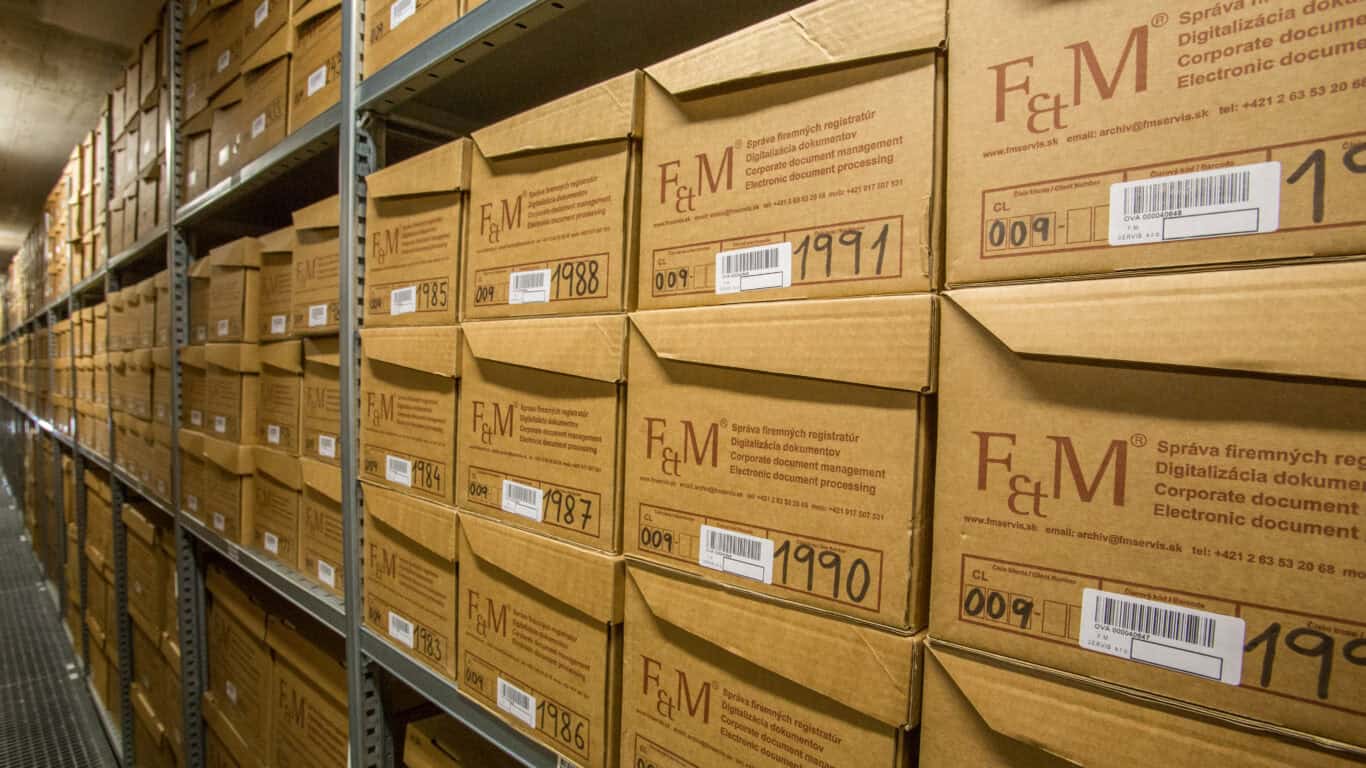Efficient filing system management is key to the clear organisation of documents, quick access to information, compliance with legislative requirements and protection of sensitive data.
A properly configured filing system will give you better control over your documents and allow you to manage your company records efficiently. Here’s how to do it:
1. Determine the category of the originator of the registry
The classification in the relevant category determines the scope of the duties in the management of the registry. The Ministry of the Interior of the Slovak Republic divides registry originators into three categories:
- Category: Public administrations and legal entities established by them.
- Category: Other originators whose activities produce documents of lasting documentary value.
- Category: Originators whose activities do not produce documents of lasting documentary value.
Read more: for details on categorisation, see the article Categorisation of companies and its impact on document management obligations.
2. Create a filing system
The registry regulations are the basic document for the management of the registry. It sets out how all records in the company will be filed, processed and stored. This document is essential to ensure the proper organization of the flow of documents.
Read more: for details on what a filing system should contain, see Filing system: the basis for effective document management in the public and private sectors.
3. Draw up a registry plan
The filing plan defines the categories of records in the company and determines the documents’ storage (retention) period.
It divides documents into clear groups by type (e.g. accounting documents, personnel documentation, project records), simplifying their registration and management.
Read more: for more information on how to properly create a filing plan, see Filing plan: what is it, who needs to have one and how to create one?

4. Establish a registry log
The register book is where you keep track of every document you receive and send.
This clear system allows you to track the movement of each document. Every legal entity is obliged by law to keep records.
5. Create a list of documents
A standard part of the processing of records is the preparation of protocols – lists of stored registers.
The log records each binder, volume, binder, wrapper, etc., marked with a serial number along with an assigned unique identifier,
Several other pieces of information are also recorded, e.g., subject description, shredding character, year of record creation, year of scheduled shredding, person transferring, department and date of transfer, division, and others.
6. Set up secure procedures for storing documents
Develop a system for the secure storage of both physical and electronic documents.
Make sure that each document is stored correctly and is only accessible to authorised persons.
External records management, as offered at F.M. Servis, can be the ideal solution for storing your data securely.

7. Introduce document shredding
By shredding outdated documents, you save space and ensure the clarity of your filing system.
It is important that documents are shredded only after the expiration of the specified retention period, which is defined by legislative standards or the organisation’s internal regulations.
Some documents, especially those with historical or permanent legal value, can never be shredded and must be stored for long-term archiving.
Read more about the correct shredding procedures in Shredding documents: a secure and efficient solution for managing your filing cabinet.
8. Implement regular inspections and training
Regular checks and staff training are important to ensure compliance with records management and data protection rules. Staff should understand the importance of proper record keeping and be aware of current policies and procedures.
Following these steps will help you build an efficient filing system thatwhich will increase transparency in the company, ensure compliance with legislation and protect sensitive data. With our services at F.M. Servis, we are happy to help you set up and manage your documents so you can focus on your core business.





